Building for Insurability, Resilience, Energy Efficiency, and Housing Affordability: Addressing the True Cost of Housing
AUTHORS: Kate Wright, Laura Jay, Heather Clark, and Lotte Schlegel
Key Points
- The rising cost of weather-related disasters is hurting homeowners and renters through rising utility costs and insurance costs.
- A wide variety of standards and best practices exist to make homes more resilient while lowering operating costs over the lifetime of the buildings.
- States and cities can implement programs to encourage more resilient buildings and defray the upfront costs of these investments.
Housing affordability and family economic security remain critically pressing issues nationwide. Too often, however, housing supply strategies overlook long-term costs including insurance, natural disaster exposure, maintenance, and utilities. These costs affect the long-term affordability of homes for families, and constrain new supply. As extreme weather increases in intensity and frequency across the U.S., and insurance and utility expenses demand a larger fraction of household costs, state and local governments have been implementing innovative solutions to holistically address affordability, resiliency, and insurability to both increase new housing supply and preserve existing housing. Cost-effective, common-sense construction methods that make buildings more energy efficient, stronger, and better able to withstand extreme weather often work in synergy, multiplying co-benefits. Such measures also improve insurability, prevent deaths in extreme heat, increase resiliency of the electric grid, extend housing durability, and lower emissions and energy costs.
This set of tools addresses the true cost of housing in a changing climate and how housing retrofits and resiliency upgrades, as well as codes and standards for new housing, can reduce long-term costs for residents and bolster insurance and mortgage markets to grow and preserve housing supply.
The Challenge This Tool Solves
Every year, the U.S. loses the equivalent of one month’s worth of new homes to climate disasters and an additional 350,000 homes to disrepair. In 2024, property damage from climate disasters reached $182.7 billion, and in the past five years, home insurance premiums have increased by 61%. The insurance industry is increasingly unable to cover new risks, not just in disaster zones but across entire regions or states. In February 2025, Federal Reserve Chair Jerome Powell testified before the Senate that “if you fast-forward 10 or 15 years, there are going to be regions of the country where you can’t get a mortgage, because of climate change.” As Accelerator for America outlined in “Insuring the Future of Our Communities,” Local and state leaders, in collaboration with the federal government and insurance industry, must take proactive steps to make sure places across the country do not become “insurance deserts,” with no or limited affordable coverage options available to residents and businesses.
Types of Communities That Could Use This Tool
All communities could benefit from programs to improve the resilience and expected lifespan of their housing stock as extreme weather becomes more frequent across the country. In particular, coastal towns vulnerable to hurricanes and storm surges, wildfire-prone areas, and regions facing frequent flooding or heatwaves that may be exacerbated by climate change will benefit. Low-income and historically underserved neighborhoods can especially benefit, as such communities tend to be located in areas of greatest physical risk and residents often lack the resources to invest in protective measures or recover quickly after disasters, or may be unable to afford insurance premiums unless upfront investments in resilience are made. Furthermore, rural communities with limited access to emergency services also stand to gain significantly. Making homes more resilient protects lives and property and promotes the long-term stability of families and homes in those communities.
Expected Impacts of This Tool
Tens of thousands of homes have already been built and retrofitted to common-sense standards, because the economics of lower energy costs and resilience work over the long run. Estimates suggest that every $1 invested in meeting modern building codes provides $11 in savings by reducing storm damage. The following policies and programs are designed to create a long-term, affordable housing supply nationwide, even amidst growing challenges from extreme weather events and high insurance and utility costs. When effectively implemented, these tools can help reduce housing costs, extend the longevity of the housing supply, and strengthen resilience, ultimately minimizing the risk to lives and property.
Disasters are increasing property insurance rates and compelling carriers to exit markets. Without insurance, prospective buyers of single and multifamily housing eventually cannot secure mortgages, and existing owners cannot finance repairs. When insurance markets fail, they affect entire states and regions beyond disaster zones, leading to property devaluation and mortgage market instability. Skyrocketing insurance rates are already slowing single and multifamily- housing construction and impacting existing housing and family economic security.
Compounding these challenges are high utility costs, further burdening families. The lowest income families spend upwards of 30% of their income on energy bills. One in four American households — and 50% of low-income households — struggle to pay their homes’ energy bills to keep them warm in winter and cool in summer. Moreover, 63% indicate that paying utility bills adds to their financial stress. More Americans are forced to choose between paying for food or paying for energy.
Aging housing, insufficient insulation, inefficient equipment, and lack of access to in-home cooling exacerbate these issues as extreme heat and weather intensifies, thereby increasing costs. 20% of U.S. homes lack adequate insulation, and the median age of a home in America is 43 years. Alongside high energy bills and increased disasters is extreme heat where cities from Phoenix, Arizona, to Salem, Oregon, are experiencing longer and more deadly extreme heat events. Extreme heat is now the number one cause of weather-related deaths in the U.S., and the vast majority of deaths from extreme heat occur at home. Ensuring safe, livable and energy efficient housing as extreme heat intensifies is becoming more and more critical.
While this tool focuses on measures that can be implemented within individual buildings, land use strategies that can increase housing affordability are equally important. Where a home is built matters as much as how a home is built. Location, such as proximity to flood zones, directly affects vulnerability to extreme weather events, impacting insurance costs and availability. Zoning, land use planning, regulations, and density requirements have significant influence on everything from transportation costs to efficiencies in heating and cooling from housing density.
This tool shares key state and local levers to cost effectively support the growth of housing supply and housing security by increasing insurability, resiliency, disaster preparedness, and energy efficiency. Tens of thousands of homes have already been built and retrofitted to these common-sense standards, because the economics of lower energy costs and resiliency work over the long run. Energy efficient construction results in fewer mortgage delinquencies. Investing in disaster-prepared, energy-savings construction is not slowing new housing supply, but can instead bolster it.
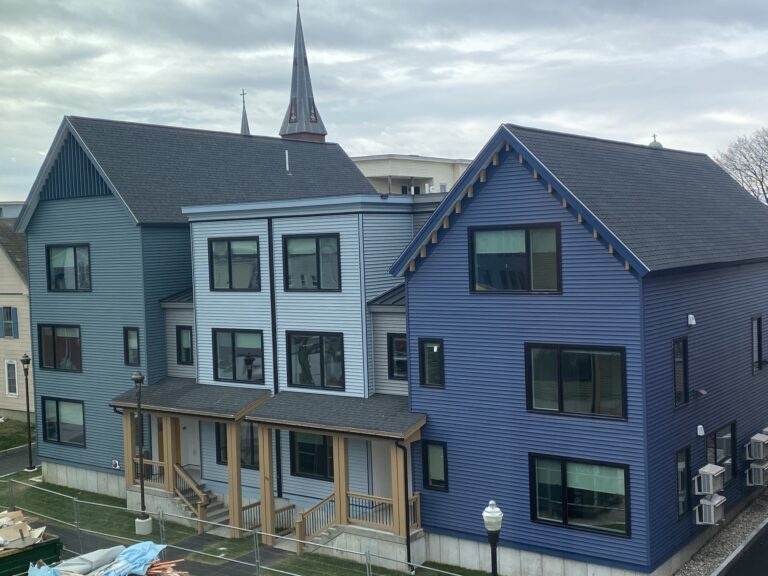
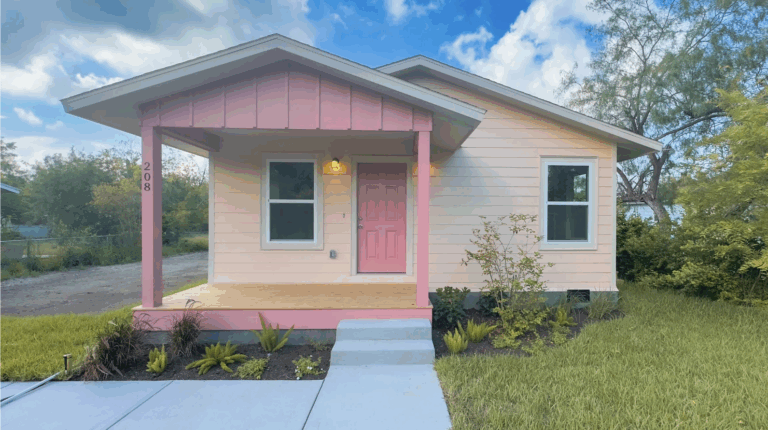
Key Policy Levers Available to States and Localities
No single solution can address these complex and critical challenges. State and local policymakers can deploy multiple tools and levers to support household affordability and resilience to boost long-term housing supply. By doing so, communities will have more housing and be less financially impacted by changing utility and insurance rates and extreme weather events. The proposed solutions require innovation and leadership at the local and state levels.
States and localities can increase housing supply that is insurable, resilient, energy efficient, and low emissions by:
- Incentivizing Energy Efficient Resilient Housing Construction and Rehabilitation: Incentivizing energy-efficient, resilient housing construction by promoting standards that exceed minimum building and energy codes, making buildings stronger, more disaster -resilient, and more energy-efficient. Incentives include density bonuses, tax abatements, expedited permitting, utility programs, low-cost surplus land access, streamlined approvals for proven high-performance designs, low-cost loans through revolving funds, and integration of resilience and energy cost saving measures into housing ballot initiatives.
- Requiring Current Building and Energy Codes: For new construction and major renovations, require current building and energy codes as a base and consider requiring stretch codes with higher performance requirements for stronger homes and deeper energy savings and emissions reductions.
- Preventing New Construction in Risk-Prone Locations and Requiring Mitigation and Resiliency in Areas with Greatest Risk: States and localities, for example, can adopt the former Federal Flood Risk Management Standard to reduce vulnerability to loss of life and property caused by flooding by avoiding construction in flood zones and building in a way to prevent future flood damage such as elevating the home above the flood zone. Local governments can co-invest in infrastructure to support broader neighborhood resilience, such as water management and flood mitigation strategies integrated between the development and surrounding infrastructure.
- Incentivizing Building Hardening Programs: This includes programs like the Insurance Institute for Business and Home Safety’s FORTIFIED certification, which protects homes from hurricanes and hail, and the Wildfire Prepared Home to protect homes from wildfire.
- Incentivizing Weatherization, Electrification, and Onsite and Community Solar: Through expedited permitting and reviews, public land transfers, and programs funded locally through bonds, tax credits,tax abatements, rebates, or utility programs, this can cut existing home energy costs, act as a hedge against rising energy costs, improve grid reliability and resilience, and save lives during extreme heat.
- Creating Housing Near Transit and Right-Sized Housing: Upzoning, infill, mixed use as-of-right zoning, and lifting minimum building and lot size requirements can lower daily transportation costs for residents and make homes more affordable and easier to heat and cool. Cities like Cleveland have created transit oriented development standards and policy tools to enable this work.
Together, these levers lower families’ annual housing costs nationwide, while protecting their home investment. Further, these solutions decrease the likelihood of catastrophic damage to new and existing homes, which changes the odds of insurance risk pools in ways that stabilize the market. State and local governments can be proactive by requiring and incentivizing building codes and standards that make new and existing homes stronger and better able to withstand climate disasters. For new construction and major retrofits, building codes are the number one recommendation of the insurance industry and FEMA to reduce loss from climate disasters and are seen by the current Treasury Department as critical for any future Federal insurance backstop. Yet most of the country doesn’t require or incentivize them. Other standards, such as the Insurance Institute for Business and Home Safety’s FORTIFIED certification can be applied on existing housing — a strategy that has worked in Alabama, which bolstered its insurance industry and made families safer by requiring building codes in high-risk counties and incentivizing FORTIFIED roofs to protect homes from hurricanes.
Energy-saving and emissions-cutting improvements including heat pumps, insulation, air sealing, rooftop solar, virtual power plants, and low embodied carbon construction materials quickly pay for themselves while making families more economically secure and healthier and improving grid reliability. Current energy codes make homes 40% more efficient than homes built 15 years ago, and other standards, like PHIUS Passive House, can double these savings. High-efficiency construction quickly pays for itself over time and can even be cost neutral. For example, when the Pennsylvania Housing Finance Agency Low-Income Housing Tax Credit program provided additional points for Passive House projects, there was a surge of Passive House affordable housing developments with no perceivable cost increases. Many states now consider energy efficiency as part of their Qualified Allocation Plans for Low Income Housing Tax Credits. Existing homes also benefit from energy efficiency retrofits that reduce costs and improve safety.
Energy improvements can also enhance insurability, disaster resilience, and safety. For example, Los Angeles homes built to the highly efficient Passive House standard survived the 2025 fires better than comparable homes. In Kansas City, Passive House multifamily homes enjoy lower insurance premiums and higher ROIs. Building to the newest energy codes are also proven to save lives in extreme heat. Analysis from the National Labs shows fewer heat-related deaths in homes with better insulation and air sealing that maintain cooler temperatures.
Addressing resilience, insurability, and energy-saving construction in housing supply strategies can avoid costly losses. In the Southeast, homes were destroyed by Hurricane Helene because common-sense building codes were not updated and limits were not placed on flood zone and steep slope construction. As a result, homes were built in vulnerable locations and were not strong enough to withstand the storm. Across the country, communities continue zoning high-risk land for new housing construction and only one third of the country has adopted modern building codes. Analysis from the National Zoning Atlas and Urban Institute shows that 20% of land zoned for new housing in Montgomery County, Alabama is located in areas of high flood risk, which if built out, could expose new homes and families to catastrophic risk. While climate change is already impacting the amount of land in the U.S. that is suitable for new housing construction, building codes and zoning and land use reform can make buildings stronger and encourage the growth of resilient and insurable housing supply growth.
These case studies illuminate how cities, states, and localities are implementing solutions using the key levers identified above. These approaches reduce costs, stabilize insurance markets, lower annual utility and maintenance expenses for families, and increase needed housing stock while improving existing housing quality.
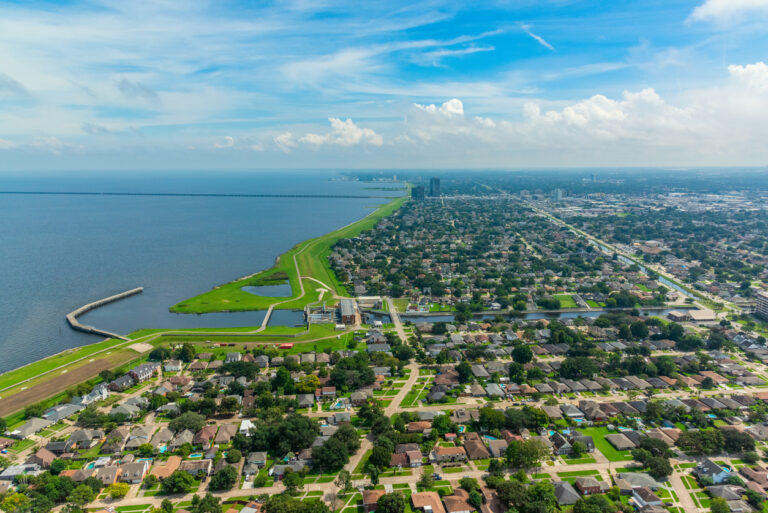
Case Study
Building Codes and Energy Codes
Building for Insurability, Resilience, Energy Efficiency, and Housing Affordability: Addressing the True Cost of Housing
Following Hurricane Katrina’s destruction, Louisiana established a statewide uniform building code to address the fundamental question of: How do we build to be able to continue to live here? Local homebuilders on the Louisiana Code Council advocated for stronger building codes protecting against disaster damage, and energy codes that lower costs, save lives in extreme heat, and prevent mold in Louisiana’s hot, humid climate.
Read More About Building Codes and Energy Codes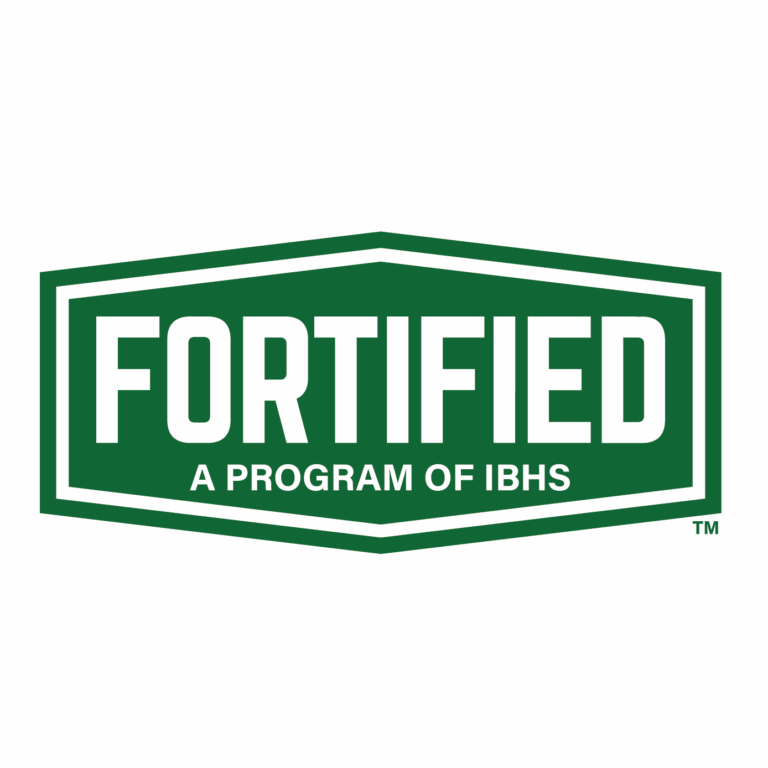
Case Study
FORTIFIED and Building Codes
Building for Insurability, Resilience, Energy Efficiency, and Housing Affordability: Addressing the True Cost of Housing
Alabama bolstered its insurance industry and improved family safety by reducing extreme wind and hurricane risks through better coastal building codes and FORTIFIED roof incentives. FORTIFIED is an Insurance for Business and Home Safety (IBHS) program for new and existing homes that is proven to prevent damage from hurricanes, high winds, hail, and severe thunderstorms by making homes stronger and stopping water intrusion at the roof.
Read More About FORTIFIED and Building Codes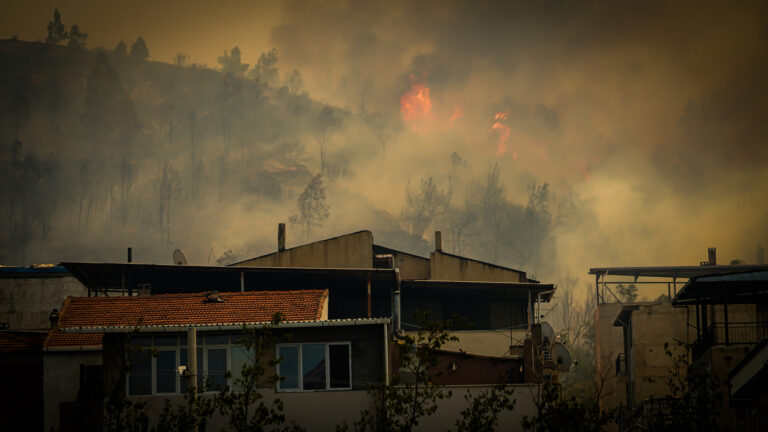
Case Study
Wildfire
Building for Insurability, Resilience, Energy Efficiency, and Housing Affordability: Addressing the True Cost of Housing
In wildfire-prone areas, strategies that reduce home combustibility include metal roofing, air sealing, and removing combustible material within five feet of a home.
Read More About Wildfire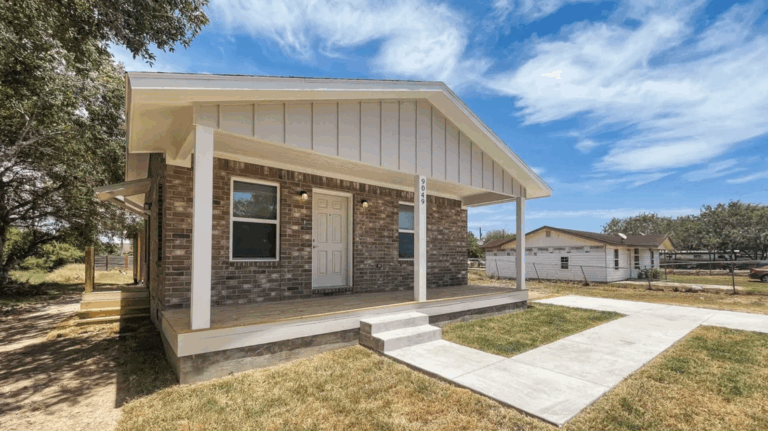
Case Study
Come Dream Come Build
Building for Insurability, Resilience, Energy Efficiency, and Housing Affordability: Addressing the True Cost of Housing
Come Dream Come Build (CDCB) is a 50-year-old community development corporation and CDFI serving low-income communities in the Rio Grande Valley of Texas through rental assistance, housing counseling, new single family and multifamily development, rehabilitation of existing housing, disaster clean up and financing.
Read More About Come Dream Come Build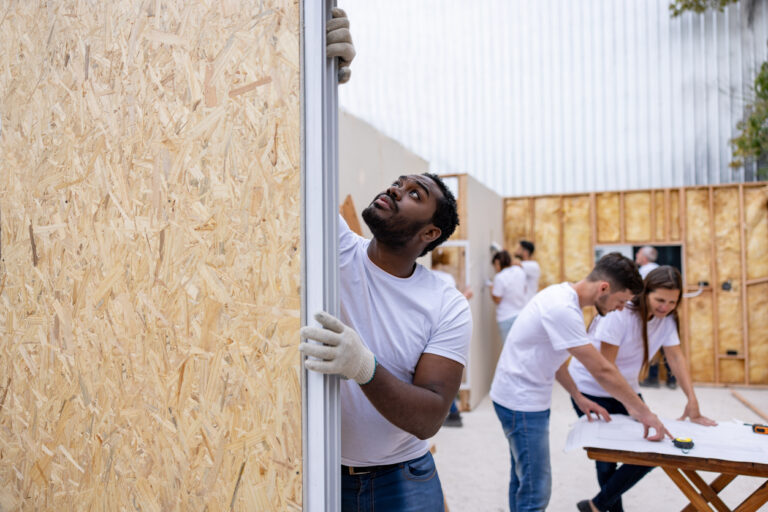
Case Study
Greater Cleveland Habitat for Humanity
Building for Insurability, Resilience, Energy Efficiency, and Housing Affordability: Addressing the True Cost of Housing
Greater Cleveland Habitat for Humanity adopted high-speed modular construction to build 400 homes to meet an American Rescue Plan Act (ARPA) funding deadline.
Read More About Greater Cleveland Habitat for Humanity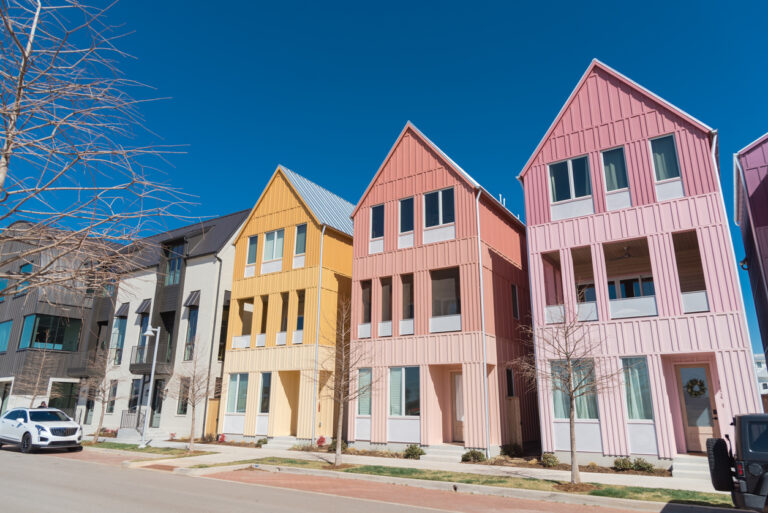
Case Study
Wheeler District
Building for Insurability, Resilience, Energy Efficiency, and Housing Affordability: Addressing the True Cost of Housing
Wheeler District in Oklahoma City is a mixed-use infill neighborhood at a former airport that is walkable and bikeable, and includes a range of diverse price points and housing types from small studio apartments to large single-family homes.
Read More About Wheeler District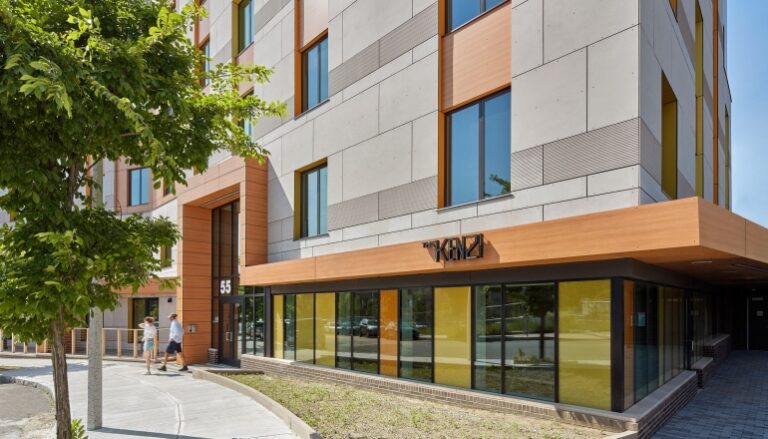
Case Study
Preservation of Affordable Housing
Building for Insurability, Resilience, Energy Efficiency, and Housing Affordability: Addressing the True Cost of Housing
Preservation of Affordable Housing (POAH) is a nonprofit organization that develops, owns, and manages affordable housing in across 13 states and D.C., building highly efficient large, affordable multifamily housing at costs equal to or slightly above buildings that meet code and back up power during power outages for critical devices and refrigeration.
Read More About Preservation of Affordable Housing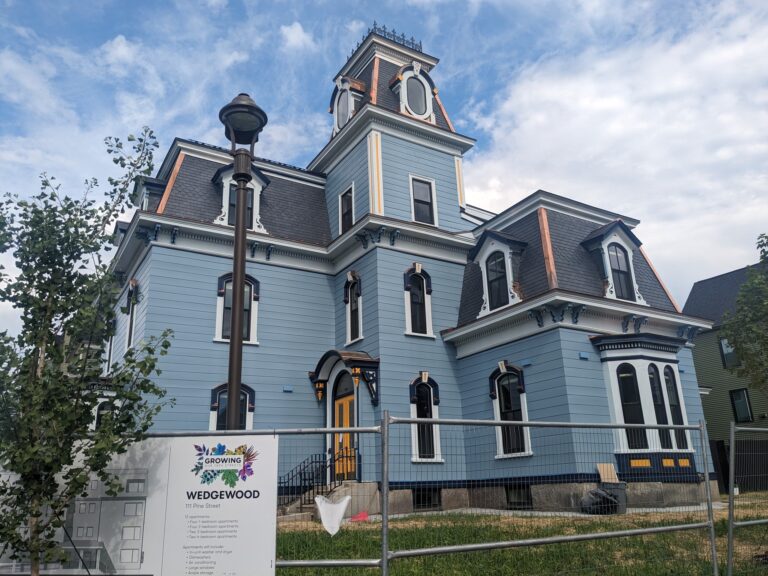
Case Study
Lewiston, ME
Building for Insurability, Resilience, Energy Efficiency, and Housing Affordability: Addressing the True Cost of Housing
In Lewiston, ME, a 220-unit Lewiston Choice Neighborhood Development is under construction to serve the much needed missing middle housing.
Read More About Lewiston, ME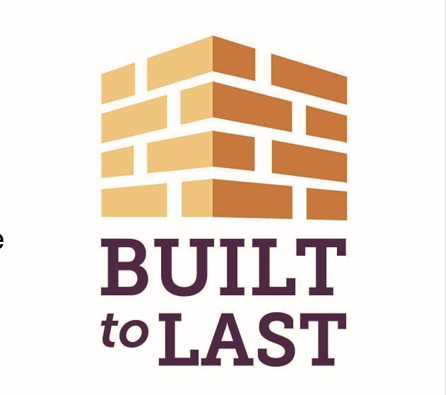
Case Study
Philadelphia Built to Last
Building for Insurability, Resilience, Energy Efficiency, and Housing Affordability: Addressing the True Cost of Housing
Built to Last provides comprehensive home repair services for Philadelphia homeowners who are low income. Created in 2021 by the Philadelphia Energy Authority (PEA), the program simplifies access to a wide range of existing home improvement programs that are complicated to navigate for homeowners, and difficult to stack.
Read More About Philadelphia Built to Last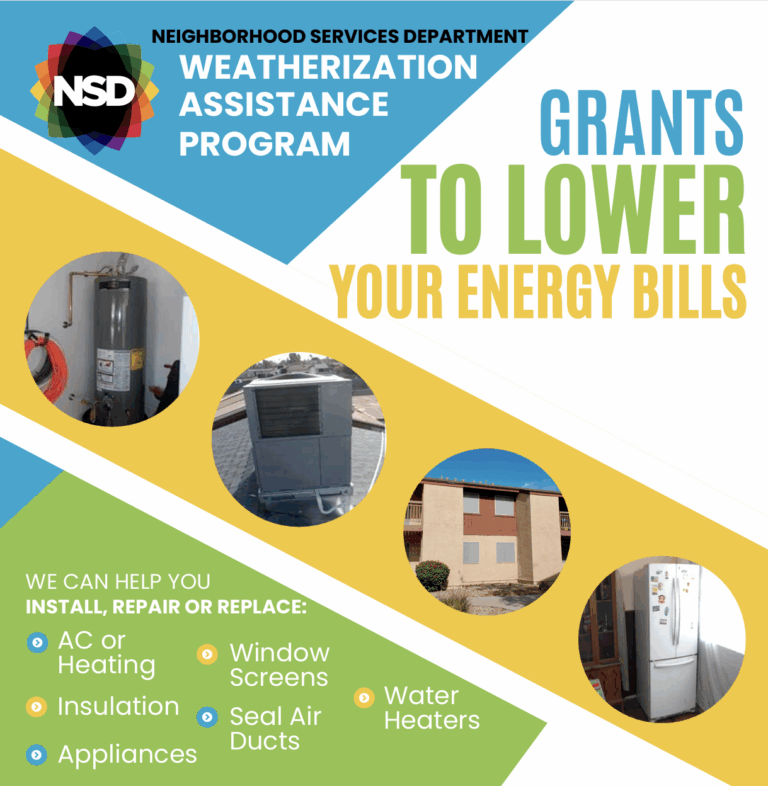
Case Study
Phoenix Housing Repairs and Rehabilitation Program
Building for Insurability, Resilience, Energy Efficiency, and Housing Affordability: Addressing the True Cost of Housing
Housing affordability remains a top concern for Phoenix residents. To help support the high percentage of homeowners, the City of Phoenix’s Housing Repairs and Rehabilitation Programs help low-income homeowners repair vital home systems and structures.
Read More About Phoenix Housing Repairs and Rehabilitation Program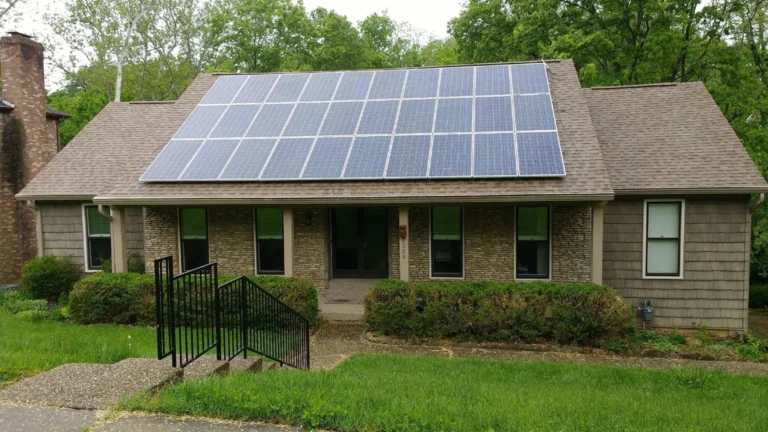
Case Study
Utility Programs Provide a Source of Funding for Energy Improvements in Housing
Building for Insurability, Resilience, Energy Efficiency, and Housing Affordability: Addressing the True Cost of Housing
In many regions of the country, utility programs provide financial support for the incremental cost of energy improvements. For example, Oklahoma’s local utility, OG&E, offered a rebate for geothermal systems at the Wheeler District. In Massachusetts, Mass Save, the utilities’ energy efficiency program, provides incentives for housing that achieves Passive House certification and electrification standards.
Read More About Utility Programs Provide a Source of Funding for Energy Improvements in HousingResilient Housing Retrofit Programs
Communities developing resilient housing programs should consider the following actions:
Understand Funding Landscape: Federal, state, and utility funding can be key to these programs. Understanding the available federal and state funds for your program as well as any philanthropic opportunities is an important first step.
Take Stock of Housing Age and Retrofit Needs: Understanding the landscape of local housing will help shape the type of program needed. Determining the age, common retrofit needs, mix of multi-family and single-family housing, as well as rental stock will help identify relevant case studies and develop program focus.
Build Coalitions Between Housing and Sustainability Professionals: Local leaders play critical roles in breaking down silos across climate, housing and economic development sectors to help implement solutions outlined in this policy guide. This can also help identify where there are gaps in skills needed to implement solutions and build the demand and programs to meet those needs.
Catalog Region-Specific Solutions: Leaning on the specific weather and risks in your region will be important to creating an effective program. Reaching out to community organizations to understand challenges and looking at past city programs can help identify the suite of solutions needed.
Identify Partners: Many of the case studies highlighted work with community organizations as well as developers, contractors, and others to improve effectiveness. Leveraging community expertise will help build a successful program that can seamlessly integrate with ongoing work.
Serve as a Hub for Your Residents: Programs supporting existing housing are only as useful as people’s ability to use them effectively. It’s critical that local governments create, or support the creation of, programs that provide support for stacking existing home upgrade programs available within your city through state, federal, utility, and city incentives and programs.
Invest in Workforce Development: Finding contractors capable of installing upgrades like EV chargers and heat pumps can be challenging. Growing the workforce through certifications, community college programs, and other workforce development programs can create jobs and increase overall economic benefits of a retrofit program.
Pursue Opportunities for Scalability to Reduce Cost: As cities work to meet their new housing and retrofit goals, implementing resilience and energy efficiency requirements and upgrades at scale will reduce per-unit costs.
